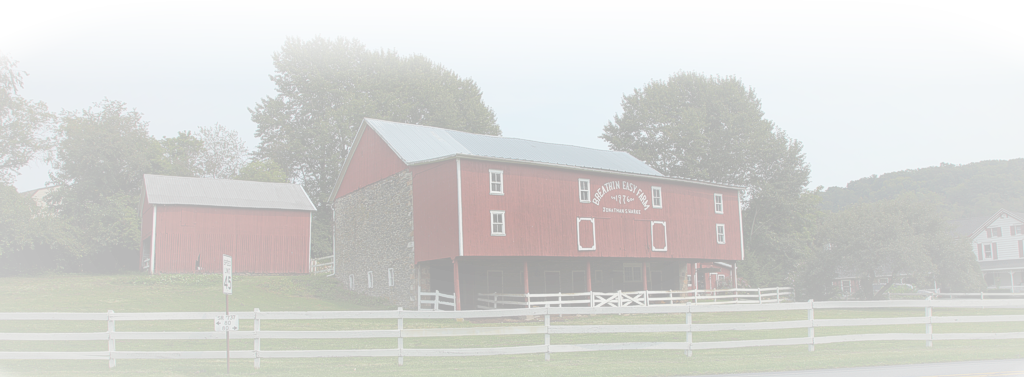 Greenwich Township lies within the Hardyston Jasper Archaeological District. This district within Greenwich Township is defined by intensive jasper usage by Native American Indians in lithic tool activity dating back 10,000 years.
The earliest known inhabitants of the Township were a meek and docile tribe of Delaware Indians called the Lenni Lenape whose ancient symbol was the turtle. It was the sub-tribe, Minsi (Wolf), of the Lenni Lenape that lived in this area. The largest Minsi settlement in Berks County was located at present day Virginville on the Township's southern border.
Greenwich Township lies within the Hardyston Jasper Archaeological District. This district within Greenwich Township is defined by intensive jasper usage by Native American Indians in lithic tool activity dating back 10,000 years.
The earliest known inhabitants of the Township were a meek and docile tribe of Delaware Indians called the Lenni Lenape whose ancient symbol was the turtle. It was the sub-tribe, Minsi (Wolf), of the Lenni Lenape that lived in this area. The largest Minsi settlement in Berks County was located at present day Virginville on the Township's southern border.
The first European settlers came to the area in the early 1700's. These settlers were mostly Germans, although some were descendants of French Hugenots. They came to America primarily from the German Province of Pfalz (or Palatinate). The Palatinates settled the area as farmers, building family farmsteads and clearing the land for agriculture.
Greenwich Township was originally part of Albany Township. Greenwich Township separated from Albany Township and incorporated as a township in 1755. It was named by English settlers after Greenwich, England.
The early settlers were religious people as evidenced by the construction of their churches soon after settlement. As early as 1744, a reformed congregation known as the High Dutch was organized on what is now the site of Dunkels Church. The original log structure was replaced by a second log structure in 1790 and by a brick building in 1859. The brick building is still standing and considered structurally sound, although it has been vacant since 1971. Two other churches of historical significance are the Bethel Lutheran Church (now known as Mount Zion Lutheran Church), which was organized in 1761 at Grimville, and the Friedens Church, which was erected in 1856 between Lenhartsville and Klinesville along the old Allentown State Road (Old 22). Between 1923 and 1925 the brick church in Grimville was replaced by the existing stone church. These early churches probably doubled as schools until the Township adopted the public school system in 1851. By 1923, there were 11 one-room school houses in the Greenwich Township area. Some of these were still in use as late as 1944.
There were three main villages in what is now considered Greenwich Township. Klinesville was founded by Peter Kline, who built a large log structure that served as an inn and a store. Krumsville, earlier known as Smithville, was first settled by Reuben Smith who built a tavern there along the State Road. Mrs. Wilson P. Krum purchased most of Smith's property in 1885 and the village became known as Krumsville. Grimville is named after Col. David Bertolet Grim, who built a brick inn known as The Golden Lamb along this important cattle driving route in 1836. The cattle driving route was one of the two main cattle driving routes in Pennsylvania and allowed Grimville to prosper. In the years to follow a store, tannery, and distillery were added to the town to accommodate all the livestock traffic. In 1844 this thriving livestock town had a large cattle auction, three stores and seven taverns to serve the needs of the drovers.
Further south in the Township, an area known as Liscum emerged around the Three Mile House, which is no longer in operation. Jacob Stein established this tavern in 1850, and nearby lies Stein's distillery. While several distilleries were operating in the area, Stein's producing fine quality rye whiskey, was probably the largest and best known. Also at this site was an old stone cabin that was used by Adam Stein as a warehouse for the distillery. This structure is no longer standing but was believed to be the oldest structure in the Township.
With three substantial water sources in the community, numerous mills were built and an excellent goods and services support system was established for what has historically been and remains today the Township's major industry - farming. When the Berks County Railroad established a passenger and freight station in Lenhartsville in 1872, many commercial establishments began to flourish. Some of the major businesses in the Township that developed near the railroad were: the Maidencreek Furnace (a large producer of iron), the Greenwich Manufacturing Company (known locally as the Paint Works), and the Fisher Shirt Factory. The railroad stopped the passenger line in 1949 and freight service in 1972.
The beauty of the Township lies not only in its bucolic landscape but in the excellent examples of Pennsylvania German architecture. There are presently six sites in the Township that appear on the National Register of Historic Sites. They include Kutz Mill Covered Bridge, Stein's Mill, Merkel's Mill, Kutz Mill, Dreibelbis Station Covered Bridge, and the Donald Kershner property (or Lenhart Farmstead) outside of Lenhartsville. There are many more sites in the Township that could be eligible for the Register.
